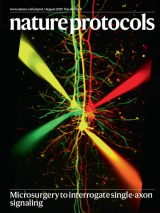
Contact information
Websites:
plasticity.muhc.mcgill.ca
mcgill.ca/plasticity
http://rimuhc.ca/-/per-jesper-sjostrom-msc-phd
To apply to the Sjöström Lab, please use this form.
Email: jesper.sjostrom [at] mcgill.ca
Office: 514-934-1934 ext. 44561
Mobile: +1-438-826-1971
Academic affiliations
Director | Centre for Research in Neuroscience
Leader | BRaIN Program at the RI-MUHC
Professor | Dept of Neurology & Neurosurgery and Dept of Medicine, Faculty of Medicine
Associate member | Dept of Physiology
Publications
Biography
Jesper Sjöström, PhD, is a professor in the Department of Neurology and Neurosurgery and the Department of Medicine at McGill University. He is Acting Leader of the Brain Repair and Integrative Neuroscience (BRaIN) program at the Research Institute of the McGill University Health Centre (RI-MUHC) as well as Director of the Centre for Research in Neuroscience (CRN) at McGill University. He is a recipient of UK MRC Career Development, CIHR New Investigator, FRQS Chercheur-Boursier, and Donald S. Wells Distinguished Scientist awards. His team explores plasticity in the brain using multiple patch-clamp, optogenetics, computer modelling, and custom 2-photon laser-scanning microscopy. His research has unveiled plasticity learning rules, neocortical connectivity patterns, and unorthodox forms of NMDA receptor signalling, which has had implications for Alzheimer disease and epilepsy research. Current and past leadership roles include Chair of the Montreal General Hospital Facility Animal Care Committee, Society for Neuroscience Theme B Chair, and Chief Editor of Frontiers in Synaptic Neuroscience. Dr. Sjöström's findings and novel ideas have been published in journals such as Neuron, Nature, Nature Neuroscience, eLife, Frontiers, and Current Opinion in Neurobiology. His work has received support from the European Union, the UK Medical Research Council (MRC), the Canadian Institutes of Health Research (CIHR), Natural Sciences and Engineering Research Council of Canada (NSERC), and the Fonds de recherche du Québec (FRQ).
Research
Research Interests in Brief
- Mechanisms and phenomenology of synaptic plasticity learning rules
- Information storage and memory in the brain
- The organization of connectivity in cortical circuits in health and disease
- Advanced optical approaches in neuroscience research
Synaptic Plasticity in Health and Disease
Neuroscientists believe that learning occurs by changes at synaptic connections between neurons in the brain, which is known as synaptic plasticity. My research focuses on the properties and mechanistic underpinnings of plasticity, as well as its functional impact. We also explore the connectivity patterns that ensue from plasticity and how these are shaped by activity. Our goal is to understand the role of plasticity in health as well as in pathologies such as epilepsy and autism. To do so, my team employs state-of-the-art technology such as quadruple whole-cell recordings, two-photon laser scanning microscopy, optogenetics, and computer simulations.
 Multicolor imaging to identify neuronal processes in the brain
Multicolor imaging to identify neuronal processes in the brain
Neuronal processes in the brain are intricately interwoven, making it difficult to study individual compartments. Using two-photon microscopy and quadruple whole-cell recording, different dyes were loaded into single neurons to resolve their structures. This approach enabled targeted laser microsurgery of fine processes, allowing precise investigation of compartment-specific neuronal signalling. From Vol 20 Issue 8, Aug 2025 of Nature Protocols, see Wong et al.